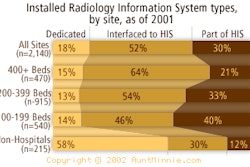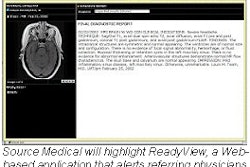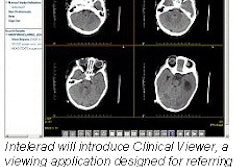There's no doubt that digital image management can improve the availability of images and reports. But that benefit rarely extends to data located on independent PACS and RIS networks at other institutions, affiliated or unaffiliated.
In an effort to improve access, healthcare IT startup HX Technologies is developing iHistory, a software platform that provides Web access to imaging data and information across different medical centers and information systems from multiple vendors. iHistory utilizes peer-to-peer networking technology to link multiple RIS and PACS networks into a virtual archive, accessible from a single Web-based user interface, said HX president and CEO Dr. Eliot Menschik, Ph.D.
Of course, such close connections can raise concerns about security and privacy. But rather than a roadblock, the Health Insurance Portability and Accountability Act (HIPAA) serves as a catalyst for security technology, Menschik said.
"HIPAA is a boon because it provides a roadmap for cross-institutional sharing of data in a secure way," he said.
HX plans to install what it calls agents at participating institutions. This hardware sets up secure "tunnels" between sites based on IP Security Protocol (ipsec), which is the basis for most virtual private network software, Menschik said.
iHistory does not require a VPN, and eliminates the need for centralized patient data repositories, he said. Image data is maintained at the host institution, which resolves concerns over data ownership and privacy. In line with HIPAA requirements, patients serve as gatekeepers for their data, granting access to selected physicians through the firm's iConsent engine.
iHistory products and services include Enterprise, which allows hospitals and integrated delivery networks to gain access to information systems from different vendors with a Web interface. Multiple patient identifier systems allow Enterprise to resolve a patient’s identity across different medical centers, according to the company.
Server is designed for single hospitals and private radiology practices that want to offer rapid access to images and reports by any authorized physician, regardless of institutional affiliation, HX said. Server also functions as a standalone short-term archive, and can be integrated with a facility's existing PACS network.
HX’s base technology, Net, is a peer-to-peer network for PACS and RIS. Net allows physicians to gain access to their patient's imaging data, regardless of its physical location, according to the firm.
To speed viewing times, HX has signed a licensing agreement with image streaming firm RealTimeImage of San Bruno, CA, which has supplied its iPACS Pixels-on-Demand technology for prompt access to full-resolution images over even low-bandwidth connections, according to the companies.
Founded two years ago by Menschik, Morristown, NJ-based HX has received financial support from the National Institutes of Health of Bethesda, MD. iHistory is currently being beta tested at the University of Pennsylvania Health System in Philadelphia.
At UPHS, iHistory has been integrated with existing PACS networks from GE Medical Systems of Waukesha, WI, and Eastman Kodak Health Imaging of Rochester, NY, offering access to information across the UPHS enterprise. PACS technology from Siemens Medical Solutions of Malvern, PA, will soon be incorporated into the HX program.
"Authorized users can utilize the system to access images from all digitally stored modalities from any location securely without the need for VPN software," Menschik said.
HX would also like to expand the service beyond UPHS to other nonaffiliated institutions in Pennsylvania. Discussions are underway with several possible sites, with the goal of adding them to the platform by the second quarter, Menschik said.
Commercial availability for iHistory is expected for the third quarter of 2003. Menschik said he envisions a subscription model for iHistory, with transactional fees for successful data movement. HX plans on pursuing both a direct sales and OEM strategy for iHistory.
"Our assumption is that as adoption takes off, it will become a feature or a back-end component to other information systems," he said.
By Erik L. RidleyAuntMinnie.com staff writer
January 16, 2003
Related Reading
RTI, HX ink licensing deal, November 25, 2002
Copyright © 2003 AuntMinnie.com




















